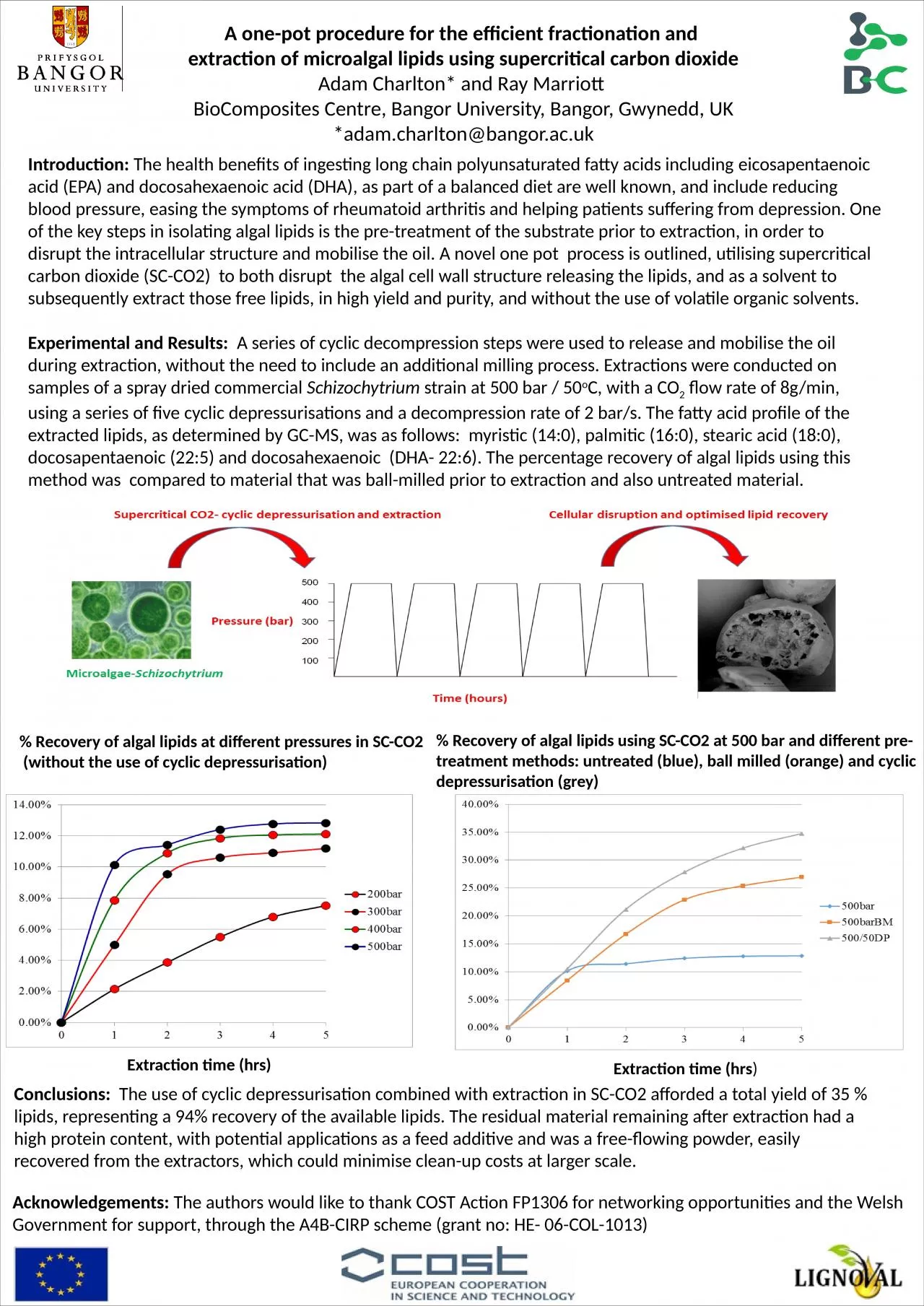

extraction of microalgal lipids using supercritical carbon dioxide Adam Charlton and Ray Marriott BioComposites Centre Bangor University Bangor Gwynedd UK adamcharltonbangoracuk ID: 916987
Download Presentation The PPT/PDF document "A one-pot procedure for the efficient fr..." is the property of its rightful owner. Permission is granted to download and print the materials on this web site for personal, non-commercial use only, and to display it on your personal computer provided you do not modify the materials and that you retain all copyright notices contained in the materials. By downloading content from our website, you accept the terms of this agreement.
Slide1
A one-pot procedure for the efficient fractionation and
extraction
of microalgal lipids using supercritical
carbon dioxide
Adam Charlton* and Ray Marriott BioComposites Centre, Bangor University, Bangor, Gwynedd, UK*adam.charlton@bangor.ac.uk
Introduction: The health benefits of ingesting long chain polyunsaturated fatty acids including eicosapentaenoic acid (EPA) and docosahexaenoic acid (DHA), as part of a balanced diet are well known, and include reducing blood pressure, easing the symptoms of rheumatoid arthritis and helping patients suffering from depression. One of the key steps in isolating algal lipids is the pre-treatment of the substrate prior to extraction, in order to disrupt the intracellular structure and mobilise the oil. A novel one pot process is outlined, utilising supercritical carbon dioxide (SC-CO2) to both disrupt the algal cell wall structure releasing the lipids, and as a solvent to subsequently extract those free lipids, in high yield and purity, and without the use of volatile organic solvents. Experimental and Results: A series of cyclic decompression steps were used to release and mobilise the oil during extraction, without the need to include an additional milling process. Extractions were conducted on samples of a spray dried commercial Schizochytrium strain at 500 bar / 50oC, with a CO2 flow rate of 8g/min, using a series of five cyclic depressurisations and a decompression rate of 2 bar/s. The fatty acid profile of the extracted lipids, as determined by GC-MS, was as follows: myristic (14:0), palmitic (16:0), stearic acid (18:0), docosapentaenoic (22:5) and docosahexaenoic (DHA- 22:6). The percentage recovery of algal lipids using this method was compared to material that was ball-milled prior to extraction and also untreated material.
Acknowledgements:
The
authors would like to thank COST Action FP1306 for networking opportunities and the Welsh Government for support, through the A4B-CIRP scheme (grant no: HE- 06-COL-1013
)
% Recovery of algal lipids at different pressures in SC-CO2 (without the use of cyclic depressurisation)
Extraction time (hrs)
% Recovery of
algal lipids
using SC-CO2 at 500 bar and different pre-treatment methods: untreated (blue), ball milled (orange) and cyclic depressurisation (grey)
Extraction time (hrs
)
Conclusions: The use of cyclic depressurisation combined with extraction in SC-CO2 afforded a total yield of 35 % lipids, representing a 94% recovery of the available lipids. The residual material remaining after extraction had a high protein content, with potential applications as a feed additive and was a free-flowing powder, easily recovered from the extractors, which could minimise clean-up costs at larger scale.